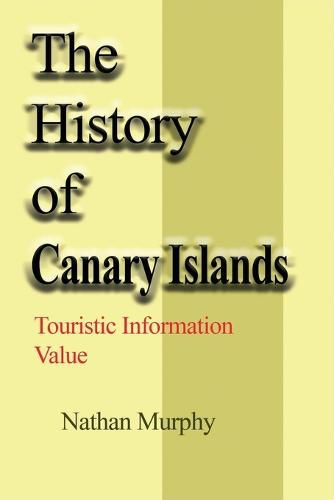Readings Newsletter
Become a Readings Member to make your shopping experience even easier.
Sign in or sign up for free!
You’re not far away from qualifying for FREE standard shipping within Australia
You’ve qualified for FREE standard shipping within Australia
The cart is loading…






This title is printed to order. This book may have been self-published. If so, we cannot guarantee the quality of the content. In the main most books will have gone through the editing process however some may not. We therefore suggest that you be aware of this before ordering this book. If in doubt check either the author or publisher’s details as we are unable to accept any returns unless they are faulty. Please contact us if you have any questions.
The History of Canary Islands. Touristic Information Value. A Historic Book on Canary, The Canary Islands have great natural attractions, climate and beaches making the islands a major tourist destination, being visited each year by about 12 million people. Among the islands, Tenerife has the most number of tourists received annually, followed by Gran Canaria and Lanzarote. The archipelago’s principal tourist attraction is the Teide National Park (in Tenerife) where the highest mountain in Spain and third largest volcano in the world (Mount Teide) is located; it receives over 2.8 million visitors annually. The Canary Islands currently has a population of 2,098,593 inhabitants, making it the eighth most populous of Spain’s autonomous communities, with a density of 281.8 inhabitants per km(2). The total area of the archipelago is 7447 km(2). It also enjoys sub-tropical climate with longer hot days in summer and cooler days in winter. The status of capital city is shared by the cities of Santa Cruz de Tenerife and Las Palmas de Gran Canaria, which in turn are the capitals of the provinces of Santa Cruz de Tenerife and Las Palmas. Until 1927 Santa Cruz de Tenerife was the only capital. The third largest city of the Canary Islands is San Cristobal de La Laguna (City World Heritage Site) on the island of Tenerife.
$9.00 standard shipping within Australia
FREE standard shipping within Australia for orders over $100.00
Express & International shipping calculated at checkout
This title is printed to order. This book may have been self-published. If so, we cannot guarantee the quality of the content. In the main most books will have gone through the editing process however some may not. We therefore suggest that you be aware of this before ordering this book. If in doubt check either the author or publisher’s details as we are unable to accept any returns unless they are faulty. Please contact us if you have any questions.
The History of Canary Islands. Touristic Information Value. A Historic Book on Canary, The Canary Islands have great natural attractions, climate and beaches making the islands a major tourist destination, being visited each year by about 12 million people. Among the islands, Tenerife has the most number of tourists received annually, followed by Gran Canaria and Lanzarote. The archipelago’s principal tourist attraction is the Teide National Park (in Tenerife) where the highest mountain in Spain and third largest volcano in the world (Mount Teide) is located; it receives over 2.8 million visitors annually. The Canary Islands currently has a population of 2,098,593 inhabitants, making it the eighth most populous of Spain’s autonomous communities, with a density of 281.8 inhabitants per km(2). The total area of the archipelago is 7447 km(2). It also enjoys sub-tropical climate with longer hot days in summer and cooler days in winter. The status of capital city is shared by the cities of Santa Cruz de Tenerife and Las Palmas de Gran Canaria, which in turn are the capitals of the provinces of Santa Cruz de Tenerife and Las Palmas. Until 1927 Santa Cruz de Tenerife was the only capital. The third largest city of the Canary Islands is San Cristobal de La Laguna (City World Heritage Site) on the island of Tenerife.